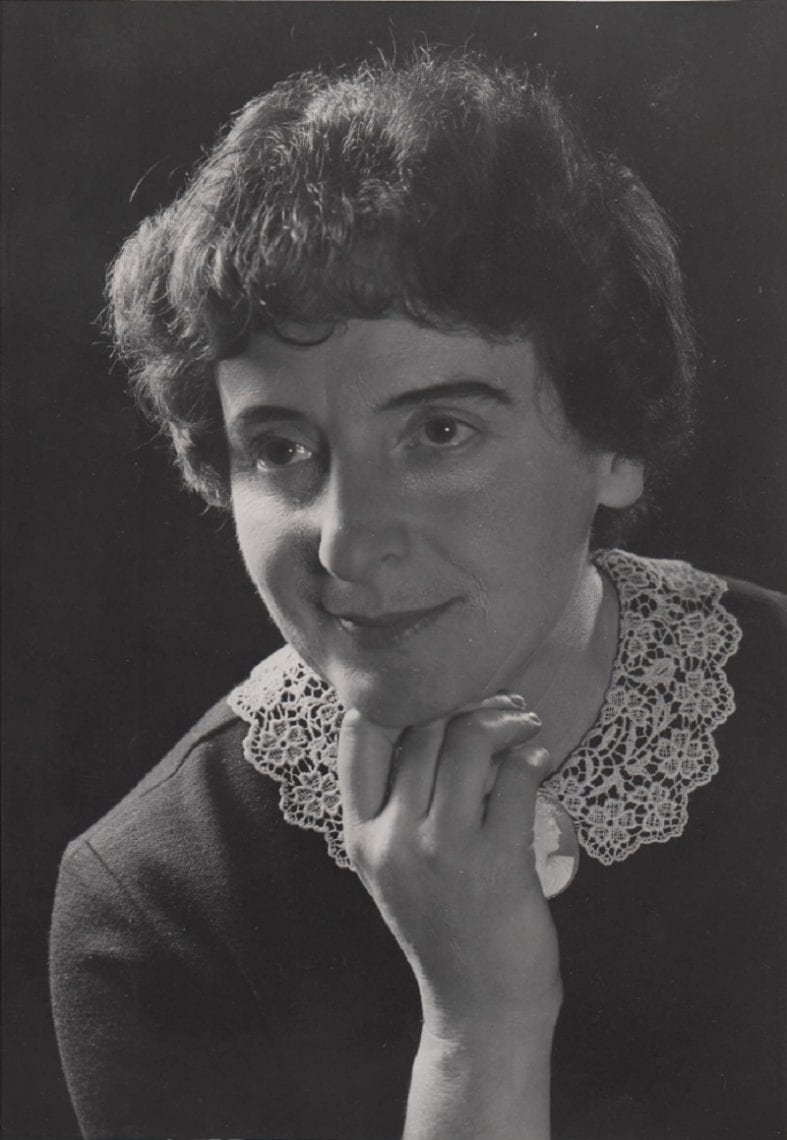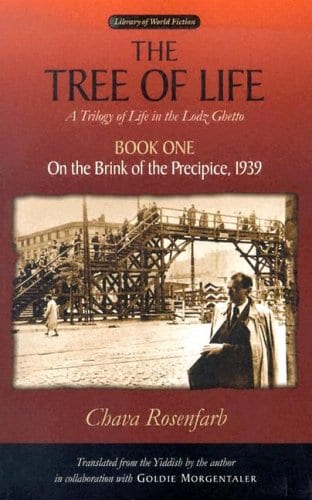January 30 marked Eight years since the passing of Chava Rosenfarb, one of the most significant, albeit underrated, Yiddish writers of the late 20th century. Rosenfarb was born in 1923 in Lodz, Poland. At that time, Lodz was about one-third Jewish, and the experience of growing up in a city with such a strong and diverse Jewish presence would have a profound impact on Rosenfarb’s work. Additionally, her parents, Abraham and Simma, were members of the Bund, a Jewish political and cultural movement that advocated for socialism, as well as for Yiddish as the primary language of the Jewish people. Rosenfarb grew up surrounded by secular Yiddish culture, and while Jewish Lodz would be where Rosenfarb would set her master work, Yiddish would be the language that she would use to bring her characters to life.
Rosenfarb and her family were sent to the Lodz Ghetto just before she graduated high school (she would receive her diploma in the ghetto). Although Rosenfarb had technically started her literary career at 8 years old, when she began writing poetry, it was during her time in the ghetto that she began writing in earnest, waking at dawn in order to have time to write before going to work. Her poetry, and her commitment to writing, eventually drew the attention of the major ghetto poet Simcha-Bunim Shayevitch, who took Rosenfarb on as his protégé and introduced her to a writer’s group within the ghetto. Rosenfarb brought her poetry and writing with her when she was deported to Auschwitz in 1944, but once she arrived, her bundle of writings was taken from her, and years of her literary work was lost.

In 1945, Rosenfarb, her mother, and her sister, were liberated from Bergen Belsen. During her time at a displaced persons camp in Belgium, she began thinking about beginning to write again, particularly about the Lodz Ghetto. Years later, she published her major work, Tree of Life (Der Boym fun Lebn), a sweeping epic written in Yiddish about the intersecting lives of 10 characters in Lodz from before the German occupation until the liquidation of the Lodz Ghetto. The three volumes of Tree of Life provide an intimate look into the diversity of Jewish life in the city, including the teacher and Polish patriot Dora Diamant; Esther, the passionate communist; the poor Jew, Itche Mayer and his large family; and the wealthy industrialist, Samuel Zuckerman, who shares with Mayer a love of the history of the Jews of Lodz. Some of the characters are based on real-life figures: the poet Simkhe Bunim Berkovitch is based on her mentor Simkhe-Bunim Shayevitch, and the teenage poet Rachel Eibushitz stands in for Rosenfarb herself. Additionally, the character of Chaim Rumkowski is based on the actual Chaim Rumkowski, the controversial head of the Council of Elders in the Lodz Ghetto, who is portrayed as a grasping, manipulative orphanage director who takes sexual advantage of the young female orphans.

Tree of Life is a narrative that focuses on the daily lives of its characters: their interpersonal relationships, love affairs, and the details that give their lives texture and meaning. Rather than serving as a platform for epic historical events or grand acts of heroism, the Holocaust, and the Lodz Ghetto specifically, is a violent and disruptive force that becomes a fact of life that each character must grapple with and adapt to, each in their own quiet, individual manner. Additionally, Tree of Life does not trade in any kind of easy morality. One of the most striking aspects of Tree of Life is the extent to which the violence of the ghetto is essentially random. Characters, regardless of their moral nature, and many of whom the reader has grown to know and love, will suddenly disappear, victims of the largely arbitrary process of deportation and execution. At the same time, however, while death and violence constantly invade the narrative, what is striking about Tree of Life is the extent to which the characters cling to life, and continue to assert the fact that they are (at least for the time being) still among the living, often through sex, through art, and through the social ties and networks that they maintain. While almost none of the characters will survive until the end of the book, echoing the ultimate fates of the majority of the Jews confined in the Lodz Ghetto, they are nonetheless determined to live as vibrantly as possible.
(Rosenfarb’s convocation address after she was granted an Honorary Degree of Laws from the University of Lethbridge, Alberta, Canada in 2006)
Rosenfarb would describe this sense of simultaneous suffering and a passionate attachment to life in speaking about her feelings after her own liberation: “One moment, I relished the joy of rebirth. Every blade of grass, every tree and shrub seemed to me to be retelling the story of Genesis. I was drunk with the happiness of being, of breathing, of sensing, of seeing how the flesh began to cover my skeletal body. The next moment I hugged by sorrows so, that they poisoned the previous moments of joyful oblivion.” Rosenfarb’s epic work allows us to listen to a multiplicity of voices, and to experience and value their essential “alive-ness,” even as they face their own destruction.
Rachel Druck is the Editor of the Communities Database at Beit Hatfutsot-The Museum of the Jewish People. She can be reached at racheld@bh.org.il.